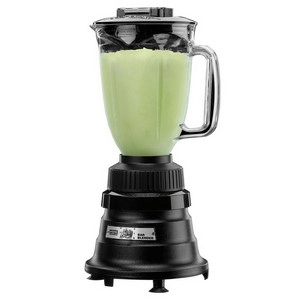Fresh butternut squash soup. Frozen lime margaritas. Balsamic vinaigrette. A mixed berry smoothie. Frozen iced coffee. Chocolate milkshakes. What do all of these have in common? These are just a few of the products made by blenders in commercial kitchens every day. In fact, you could argue that the blender is the most versatile piece of equipment in the kitchen. However, with all the choices of blenders out there, blenders can be just as diverse as they are versatile. Blenders are available with many different designs, applications, and features. Depending on what you want to accomplish with a blender, not every blender will best suit your needs. With that in mind, this blog post will be your guide to choosing the right blender. We will discuss how blenders work, the different designs and features available for commercial blenders, and questions to consider before purchasing a blender.
How do blenders work?
Blending is more than just a spinning blade cutting food or ice into tiny pieces. There are actually several processes that occur during the blending cycle. The first action to occur is the cutting process. Solid foods are chopped, cut, or smashed into finer particles. The second action to occur is flow. The stirring action of the blades begins to cause the cut particles to flow around the container. The third action to occur is circulation. As the food particles are cut and begin to flow, the water content in the food is released forming a liquid. The powerful force of the blade draws the liquid down to the bottom of the jar and then forces it out to the sides. This combination of cutting, flow, and circulation is truly what makes the blending process possible. But there is one final process at work in the blending cycle, which is called cavitation, and this is where the magic happens. During the blending process, tiny air bubbles form around the trailing edges of the blades as they spin. Cavitation occurs when these bubbles implode, creating a powerful shockwave within the blender jar. Why is this important? Because eventually, the particles being cut become too small for the blades to chop. As they flow and circulate, they simply become too small of a target for the blades. The shockwave that results from cavitation breaks down those smaller bits of food that were too small for the blades to chop.
Blender design features
It is important to understand these steps in the blending cycle because the different design features of different blenders affect how well they execute each step. Therefore, there are three main design features to consider when shopping for a blender: blade types, container shapes and sizes, and the power of the motor. All of these factors influence how well a blender will execute chopping, flowing, circulation, and cavitation. Depending on what a blender is designed for, it will have these three main design features in varying degrees. With that in mind, we may generally put types of blenders into two main categories: food blenders and drink blenders. The main difference between food and drink blenders is the blade type. Blade type is the first design feature that affects blender performance. Food blenders are better suited for preparing food items for recipes such as soups, salad dressings, salsas, and other sauces. They feature a sharper, “X” style blade that is designed for better food cutting and chopping. Drink blenders are better suited for preparing drinks that call for ice in the recipe such as margaritas, frozen coffee drinks, and milkshakes. They feature a larger, “wing” style blade with more blunt edges that better lend themselves to the task of ice crushing. There are also several all-purpose blenders on the market, which combine the blade designs of drink blenders and food blenders into one all-purpose blade. The best all-purpose blenders on the market feature high powered motors to maximize the efficiency of both food and drink preparation.
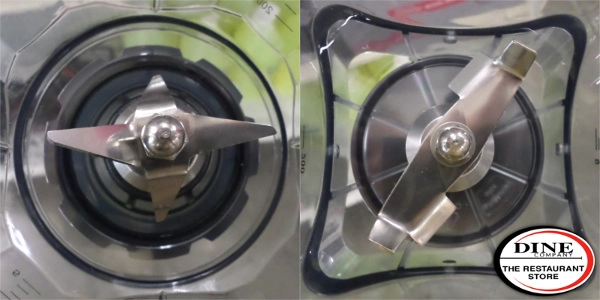
The “X” style blade (left) is designed for preparing food items for recipes such as soups, salad dressings, salsas, and other sauces. The “wing” style blade (right) features blunt edges for crushing ice for margaritas, frozen coffee drinks, and milkshakes.
The second main design feature that affects blender performance is jar size and shape. The shape of the container – known as the jar – can actually affect the circulation process. When shopping for a blender, you will no doubt encounter different shaped jars. For the most part, a blender jar will have either a rounded or square shape. The best blenders on the market today have square-shaped jars. The flat sides and corners of a square-shaped blender jar promote better circulation than a rounded jar. The size of the jar is just as important. You will need to select a blender with a jar size that can accommodate your recipe without overloading the blender. Most commercial blenders will feature blender jars that have clearly marked units of measure as well as a max fill line. Overloading a blender beyond its maximum capacity will yield a poor, inconsistent recipe and can also put extra stress on the motor, increasing the likelihood of burnout.
The third main design feature that affects blender performance is the power of the motor. Commercial blender motors range in strength from .75 to 4 horsepower. Higher power motors yield higher efficiency, better circulation, and more powerful cavitation. That means recipes prepared with a higher-powered blender will have a better texture and more consistent results overall. Blenders with higher powered motors will also be able to handle more frequent usage than blenders with lower power.
Blender usage
Once you are familiar with how blenders work and the design features that affect blender performance, you should be in a better position to find the right blender for your kitchen. Now it is just a matter of asking yourself a few simple questions. First, what am I using the blender for? The answer to this question will determine if you need a drink blender, a food blender, or an all-purpose blender. Second, how often will I use my blender? If the answer is quite often, you will need a blender with a more powerful motor to avoid burnouts and overheating the motor. Third, do any of my recipes call for ice? If the answer is yes, you will need a blender with at least a 1 horsepower motor as a base model but we recommend 1.5 horsepower or better for best results. You will also be looking for a blender with a larger “wing” style blade with blunt edges for ice crushing power. Or, you might consider a high powered all-purpose blender for both food and frozen drinks. Fourth, how much volume do my blender recipes yield? This will determine the size jar you need. Commercial blender jars range in size from 44 ounces to 1 gallon. Fifth, do I have any space constraints? If so, you may need to consider a blender with a smaller footprint or one that is easy to store. Finally, where is my blender going to be used primarily? In front of the house or the back of the house? If your blender will be located in the front of the house, you might consider a blender equipped with a sound enclosure to cut down on ambient noise.
Featured blenders
Now that we are armed with the knowledge of how blenders work, we know the design features that affect blender performance, and we know what questions to ask when shopping for a blender, let’s take a look at some examples of some specific blenders and their applications.
First up, the Waring BB155 is an affordable small batch blender. It has a 44-ounce capacity and features a three-quarter horsepower motor with simple toggle switch controls. It is best suited for light food prep in the back of the house or at the bar. Select this blender if you are looking for affordability, simplicity, and the ability to do an occasional puree, sauce, salad dressing, etc.
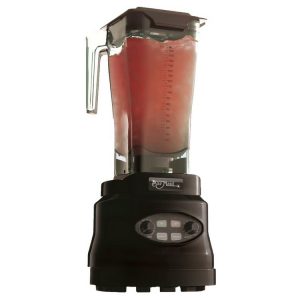 Next, the Bar Maid BLE-310 is a high powered, high volume drink blender. It features a large “wing” style blade for ice crushing efficiency. It has a 3 horsepower motor, 64-ounce capacity, and programmable controls that allow you to control the precise timing of the blend cycle. Select this blender if you are looking for a workhorse for your bar that can prepare several frozen drinks a day with consistent results.
Next, the Bar Maid BLE-310 is a high powered, high volume drink blender. It features a large “wing” style blade for ice crushing efficiency. It has a 3 horsepower motor, 64-ounce capacity, and programmable controls that allow you to control the precise timing of the blend cycle. Select this blender if you are looking for a workhorse for your bar that can prepare several frozen drinks a day with consistent results.
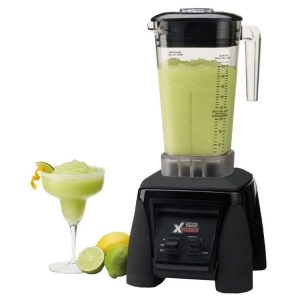 Next, The Waring Xtreme MX1000XT is an extremely high powered all-purpose blender. It features a large, heavy-duty blade that combines the design features of both “X” and “wing” style blades. It has a 3.5 horsepower motor and 64-ounce capacity, and all for a very competitive price point. Choose this blender if you are looking for a great value on a heavy-duty all-purpose blender and you are looking to use your blender frequently.
Next, The Waring Xtreme MX1000XT is an extremely high powered all-purpose blender. It features a large, heavy-duty blade that combines the design features of both “X” and “wing” style blades. It has a 3.5 horsepower motor and 64-ounce capacity, and all for a very competitive price point. Choose this blender if you are looking for a great value on a heavy-duty all-purpose blender and you are looking to use your blender frequently.
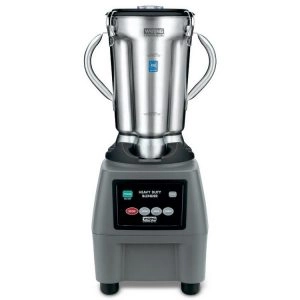 Finally, the Waring CB15 is a high volume, high powered food blender designed to make larger batches of sauces, salsas, purees, salad dressings, and more. It features a one-gallon capacity all stainless steel jar and a 3.75 horsepower motor for durability and high volume production. Choose this blender if you are looking for a rugged food blender for heavy, frequent use and you are looking to turn out recipes with larger yields on a regular basis.
Finally, the Waring CB15 is a high volume, high powered food blender designed to make larger batches of sauces, salsas, purees, salad dressings, and more. It features a one-gallon capacity all stainless steel jar and a 3.75 horsepower motor for durability and high volume production. Choose this blender if you are looking for a rugged food blender for heavy, frequent use and you are looking to turn out recipes with larger yields on a regular basis.
As you can see, blenders are as diverse as the applications we use them for. With a little product knowledge on your side, you should be able to find the right blender that fits your needs and your budget. You can find all of these blenders and much more in our showroom at 3110 Preston Hwy in Louisville, KY or you can shop online at dinecompany.com/shop.

